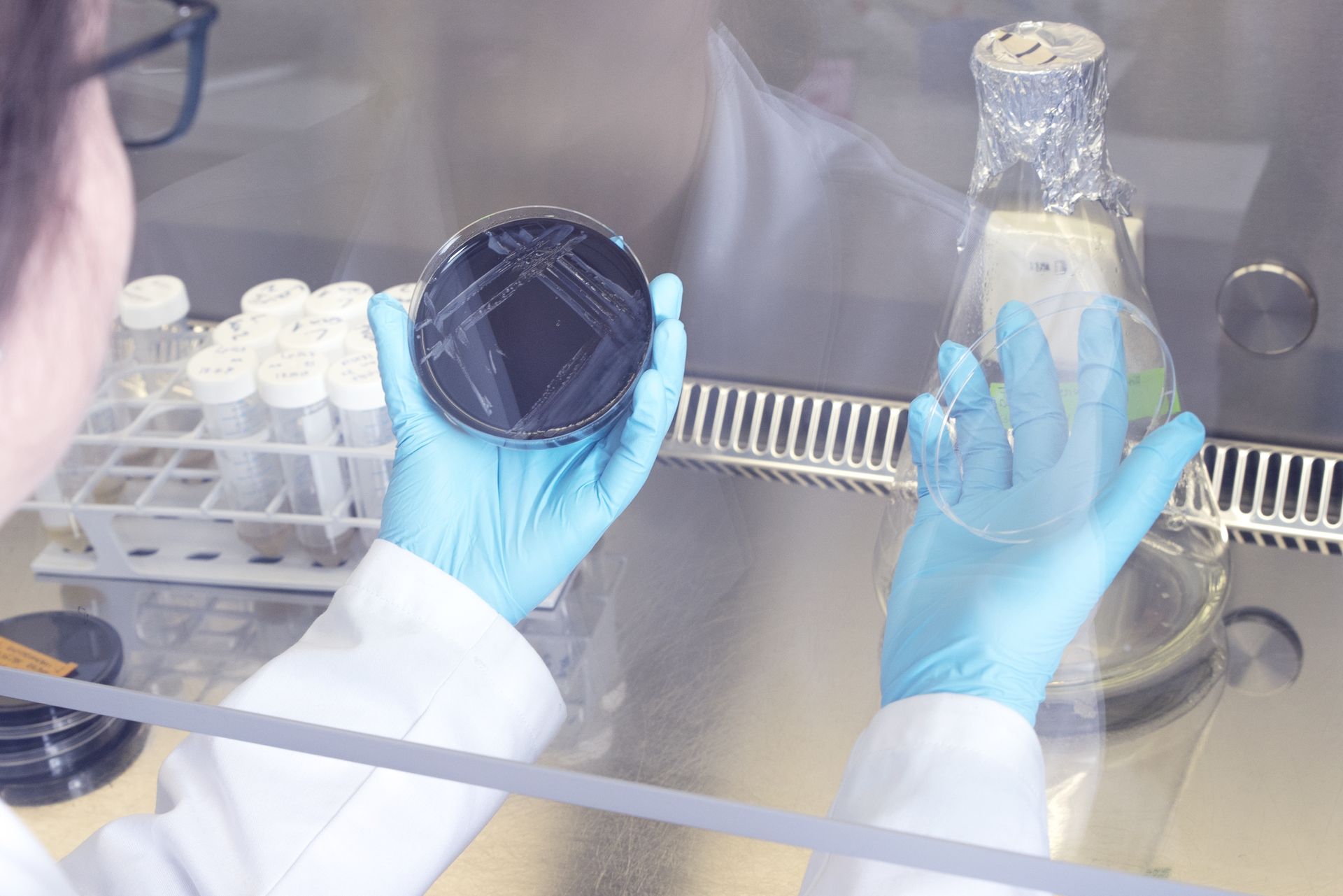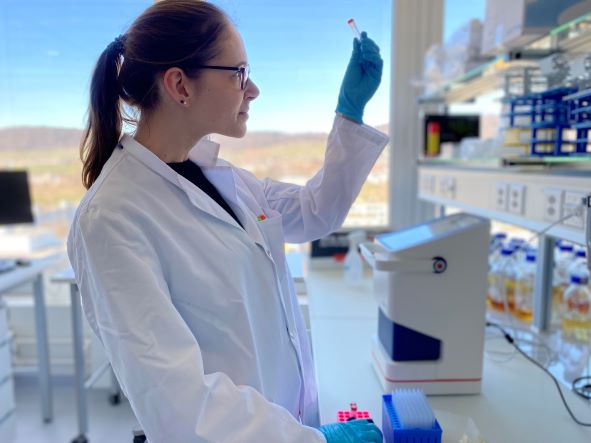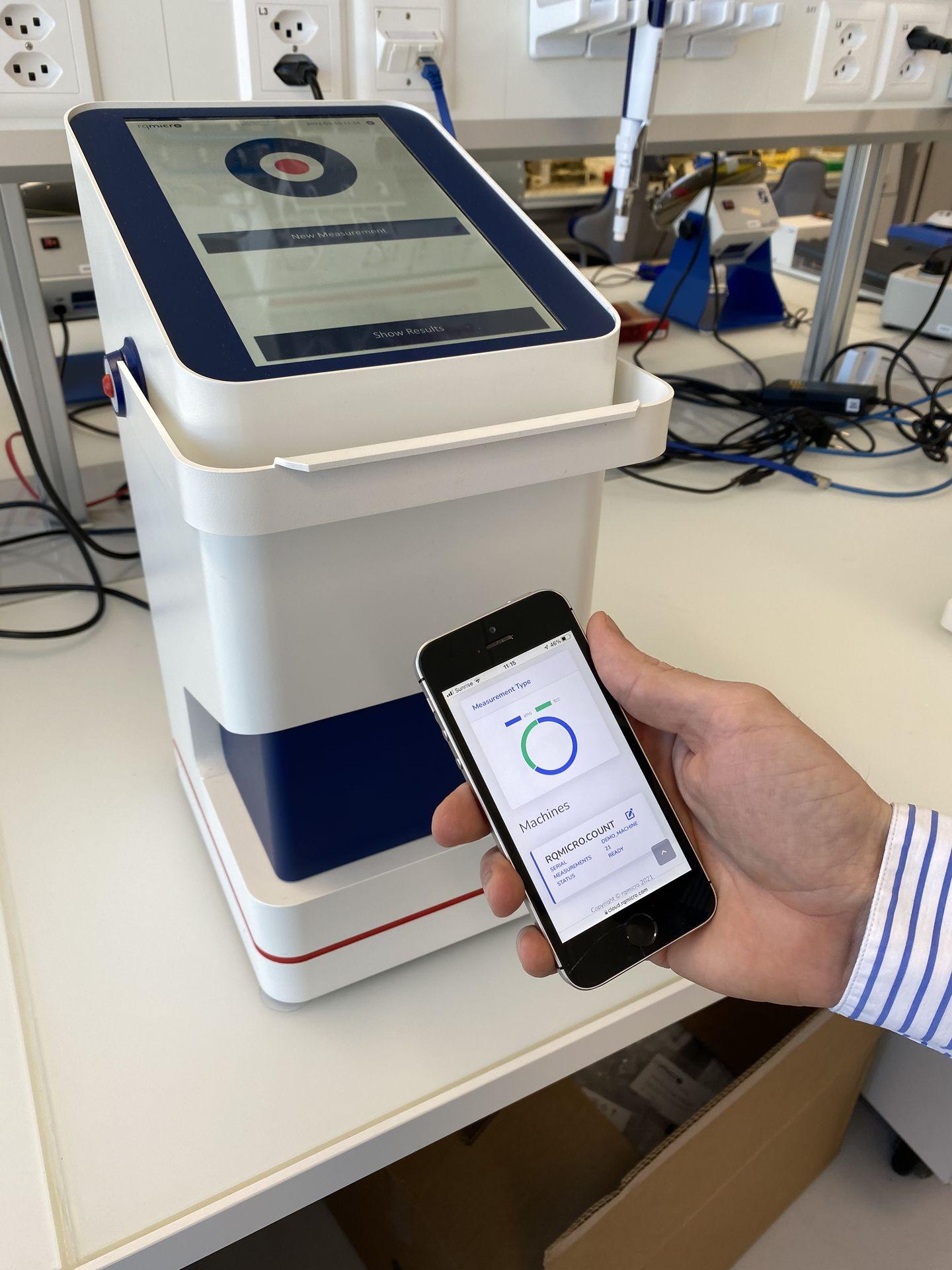Heterotrophic plate counts (HPC) have been used for more than 130 years as the standard method to quantify bacteria. With the progress of technology, new analytical tools like microscopy and flow cytometry (FCM) have provided researchers with enhanced insights into microorganisms at increasingly high resolution. It is now widely acknowledged that only a very low and highly variable fraction of waterborne microorganisms, in the region of 0.01%, are culturable heterotrophic bacteria which can be detected by HPC [1]. As a result, HPC results significantly underestimate the true bacterial concentration present in drinking water.

Among several methods for bacterial quantification, flow cytometry-based intact cell count (ICC) has been considered as the most suitable one to replace HPC [2]. Unlike the time consuming process of waiting for colonies to grow, FCM-based ICC allows for the quantification of individual cells within 15 minutes. This method has been widely accepted for its numerous advantages over HPC and has proven to be a useful routine tool in various applications. In addition to the unspecific quantification of bacteria using ICC, FCM is also gaining traction in the specific detection of waterborne pathogens such as Legionella. Notably, the Association of German Engineers (VDI) recently extended its guidelines to include rapid testing of Legionella in cooling towers using a flow cytometry-based method in the VDI guidelines 4250-2.
Advantages of Intact Cell Count (ICC) over HPC:
- ICC is very fast, delivering results within 15-30 minutes, because it does not require cell cultivation. In contrast, HPC requires cell cultivation, which is a highly variable and time-consuming process which delays the result by 42-72 hours. [2]
- ICC directly quantifies viable bacteria in water and food samples. This is achieved by using fluorescent dyes that bind to individual cells. HPC estimates the number of cells based on colony forming units. [2][3]
- ICC analysis also includes viable but non-culturable cells (VBNC) that the HPC method misses, because it does only detect culturable bacteria. [3]
- ICC provides more comprehensive and representative data on the bacterial community structure and diversity in water samples, also known as the bacterial fingerprint. On the other hand, HPC only gives a single number of colony forming units (CFU) without providing additional information. [2][3]
- ICC shows better reproducibility and much lower relative standard deviation (RSD) than HPC. While HPC has been reported to have RSD values ranging from 30% to 100%, FCM demonstrates RSD values between 3% and 7%. [2]
- When analyzing 15 or more water samples per day, FCM-based ICC proves to be more cost effective than HPC, especially when considering the high labor costs associated with a professional microbiology lab. [2]

Where Can Intact Cell Count be Applied in Industry?
- Routine microbiological water monitoring for drinking water and drinking water distribution systems (DWDS) in public and industrial water treatment systems. [3][4]
- Risk assessment for water treatment processes in various applications, such as in cooling towers, land-based aquaculture systems, water reuse and food and beverage production. [3][4]
- An evaluation tool in applied research for assessing the bacterial removal efficiency and robustness of different water treatment technologies, such as membrane filtration, disinfection, and coagulation. [3]
After 10 years of intensive research, rqmicro has launched rqmicro.COUNT, the world’s first portable flow cytometer. This innovative technology overcomes the limitations associated with conventional FCM, making ICC a powerful tool for both laboratory research and various industrial applications on-site.
The Benefits that rqmicro.COUNT Offers:
- Complement your current HPC method with additional information on the bacterial viability and diversity in water samples, which HPC alone cannot capture. This valuable addition can provide a deeper understanding and better control of microbial risks and the quality of your water treatment processes and products.
- Save time and money by providing rapid and accurate results for bacterial cell counts in water and beverage samples. This can help you reduce the turnaround time and labor costs, and to respond faster to any potential issues or changes in your production quality.
- Enhance water quality and safety by detecting both total bacteria and specific pathogens such as E. coli and Legionella, including viable but non-culturable (VBNC) cells that may pose health risks. The reliability and accuracy of microbiological testing also get improved, as false negative or false positive results caused by competing flora in HPC are avoided.
- Support water management and informed decision making through rqmicro’s Cloud Solution, an online platform for data analysis and reporting. This enables you almost real-time monitoring of water treatment processes, water distribution systems, and water reuse applications.

The Cloud Solution complements the rqmicro.COUNT instrument.
Contact us today to see how you can benefit from ICC testing on rqmicro.COUNT.
References:
[1] J. Bartram, J. Cotruvo, M. Exner, C. Fricker, A. Glasmacher. Heterotrophic plate counts and drinking-water safety: The significance of HPCs for water quality and the human health. Manual, May 2003.
[2] S. Van Nevel, S. Koetzsch, C.R. Proctor, M.D. Besmer, E.I. Prest, J.S. Vrouwenvelder, A. Knezev, N. Boon, F. Hammes. Flow cytometric bacterial cell counts challenge conventional heterotrophic plate counts for routine microbiological drinking water monitoring. Water Research, Volume 113, 2017.
[3] R. Cheswick, E. Cartmell, S. Lee, A. Upton, P. Weir, G. Moore, A. Nocker, B. Jefferson, P. Jarvis. Comparing flow cytometry with culture-based methods for microbial monitoring and as a diagnostic tool for assessing drinking water treatment processes. Environment International, Volume 130, 2019.
[4] Hannah R. Safford, Heather N. Bischel. Flow cytometry applications in water treatment, distribution, and reuse: A review. Water Research, Volume 151, 2019.